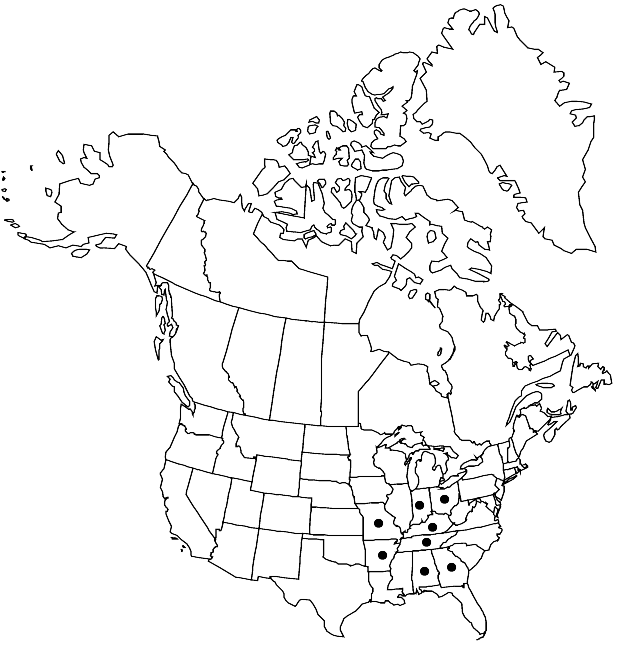Leavenworthia uniflora
Mem. Torrey Bot. Club 5: 171. 1894.
Stems (when present) 1–2 dm. Basal leaves: petiole 0.3–2.6 cm; blade 2.3–8.5 (–10) cm, lobes 3–10 on each side, margins coarsely dentate, terminal lobe suborbicular, 0.3–0.6 cm × 5–7 mm (slightly shorter than wide), slightly larger than lateral lobes, margins coarsely dentate. Fruiting pedicels: solitary flowers 30–120 mm; racemes to 40 mm. Flowers: sepals widely spreading, oblong, 2.5–4.5 × 0.9–1.5 mm; petals often erect, white, oblanceolate, 3.7–6.4 × 1–2 (–2.5) mm, claw white or pale-yellow, 1.3–2.5 mm, apex obtuse or truncate; filaments: median 2.5–4.2 mm, lateral 1.6–2.6 mm; anthers 0.5–0.8 (–1) mm. Fruits narrowly oblong, (1.5–) 2–3 cm × 3–4 (–5) mm, smooth, latiseptate; valves thin; ovules 18–26 per ovary; style 0.9–2 (–2.5) mm. Seeds 2.3–3.5 mm diam.; wing 0.2–0.4 mm wide; embryo slightly accumbent. 2n = 30.
Phenology: Flowering Mar–Apr.
Habitat: Rocky ledges, cedar glades, pastures, roadsides, old fields, thin soil on limestone beds, seeps on limestone rubble
Elevation: 100-500 m
Distribution

Ala., Ark., Ga., Ind., Ky., Mo., Ohio, Tenn.
Discussion
Leavenworthia michauxii Torrey, which pertains here, is an illegitimate name based on Cardamine uniflora Michaux.
Selected References
None.
Lower Taxa
"elongated" is not a number."thick" is not a number."dm" is not declared as a valid unit of measurement for this property.